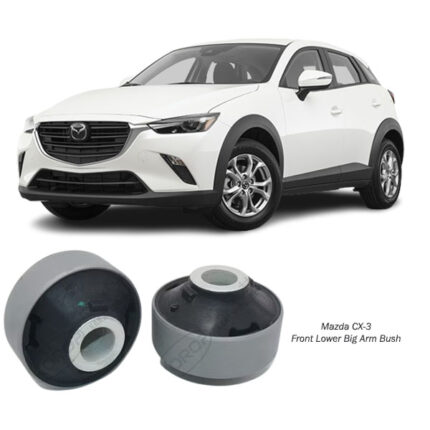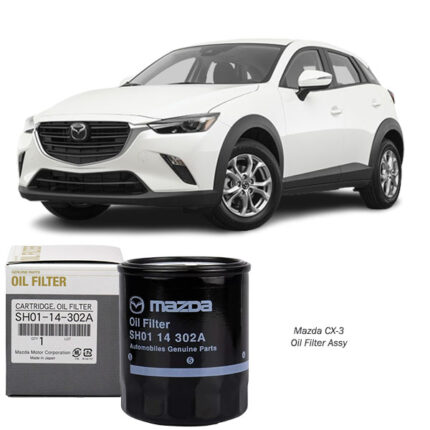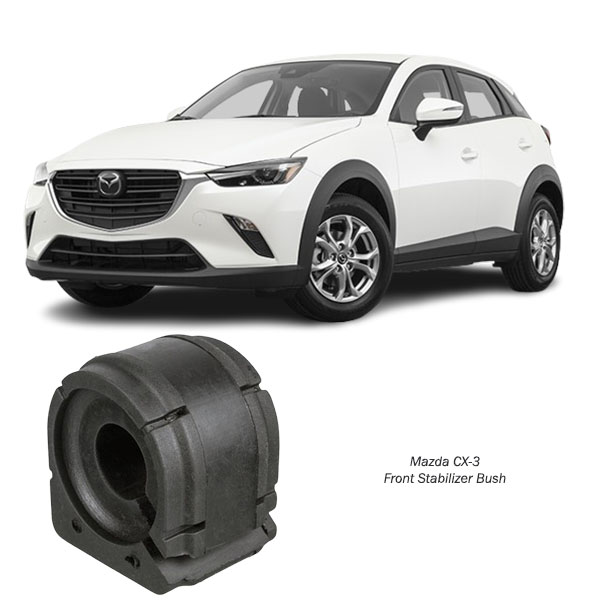-17%
Get Mazda CX-3 Front Stabilizer Bush KD61-34-156F in Kenya
The front stabilizer bush is a small but essential part of a vehicle’s suspension system. Often overlooked, this component plays a significant role in ensuring a smooth, stable, and safe driving experience. This guide explores its function, construction, importance, maintenance, and replacement, providing a detailed understanding of its role in modern automobiles.
What is a Front Stabilizer Bush?
A front stabilizer bush is a rubber or polyurethane component that cushions the stabilizer (or sway) bar as it connects to the vehicle’s chassis. The stabilizer bar reduces body roll during cornering, and the bushings help dampen vibrations, absorb shocks, and provide flexibility for the stabilizer bar’s movement.
Stabilizer bushes are mounted on either end of the stabilizer bar, where it attaches to the suspension or frame. They are vital for ensuring that the stabilizer bar functions effectively, preventing metal-on-metal contact and contributing to ride quality.
Functions of the Front Stabilizer Bush
- Dampening Vibrations
- The bush reduces vibrations from the stabilizer bar, ensuring a quieter ride. Without it, the bar would transmit road noise and harshness directly to the vehicle cabin.
- Enhancing Stability
- It ensures the stabilizer bar performs its function by maintaining the connection between the bar and the vehicle frame, thereby minimizing body roll during cornering or sudden turns.
- Protecting Other Components
- By absorbing shocks and vibrations, the bush reduces stress on the stabilizer bar, suspension arms, and chassis, prolonging their lifespan.
- Improving Handling
- The stabilizer bush contributes to consistent handling, especially in high-speed turns or when driving over uneven terrain.
Construction and Materials
- Rubber Stabilizer Bushes
- Advantages: Flexible, cost-effective, excellent at absorbing shocks and vibrations.
- Disadvantages: Less durable, susceptible to wear and tear, especially in extreme temperatures.
- Polyurethane Stabilizer Bushes
- Advantages: More rigid, resistant to chemicals, oils, and extreme temperatures, offering better performance for high-stress applications.
- Disadvantages: Can transmit more road noise and vibration, slightly less forgiving than rubber.
- Design Features
- Stabilizer bushes are designed to fit snugly around the stabilizer bar and mount securely to the chassis. Many have slotted openings or grooves to accommodate bar movement and lubrication.
Symptoms of a Failing Front Stabilizer Bush
- Clunking or Rattling Noises
- A common sign of a worn bush is noise, especially when driving over bumps or uneven terrain.
- Excessive Body Roll
- If the bush is damaged, the stabilizer bar may not function properly, leading to increased body roll during cornering.
- Steering Instability
- A faulty bush can cause looseness in the stabilizer bar, affecting steering precision and stability.
- Uneven Tire Wear
- Misalignment caused by a failing bush can result in uneven tire wear, impacting overall performance.
- Visual Wear and Tear
- Cracks, tears, or deformation in the bush material indicate the need for replacement.
Importance of the Front Stabilizer Bush
- Safety
- A functional stabilizer bush ensures the stabilizer bar performs optimally, preventing excessive body roll and improving vehicle stability during sharp turns or evasive maneuvers.
- Comfort
- By reducing vibrations and noise, the bush enhances passenger comfort, providing a smoother driving experience.
- Component Protection
- A properly functioning bush minimizes wear and tear on other suspension components, reducing maintenance costs.
- Fuel Efficiency
- With improved handling and alignment, the vehicle operates more efficiently, indirectly contributing to better fuel economy.
Replacement Process
Replacing a front stabilizer bush is a straightforward process for experienced mechanics or DIY enthusiasts with the right tools. Here’s a step-by-step outline:
- Preparation
- Raise the vehicle using a hydraulic jack or lift and secure it with jack stands. Ensure the wheels are off the ground for easy access.
- Locate the Stabilizer Bar
- Identify the stabilizer bar and the bushings that secure it to the chassis.
- Remove the Old Bushes
- Unbolt the brackets or clamps holding the bushings in place. Slide out the old bushes, taking care not to damage the stabilizer bar.
- Install the New Bushes
- Fit the new bushes onto the stabilizer bar. Ensure they align properly with the bar and brackets.
- Secure the Brackets
- Reattach the brackets or clamps, ensuring they are tightened to the manufacturer’s specifications.
- Final Checks
- Lower the vehicle and test drive to confirm the new bushes are functioning correctly, with no unusual noises or handling issues.
Maintenance Tips
- Regular Inspections
- Include stabilizer bushes in routine vehicle maintenance checks, especially during suspension inspections.
- Avoid Harsh Driving
- Sudden impacts or aggressive driving can accelerate wear on suspension components, including the stabilizer bushes.
- Use Quality Bushes
- Always opt for OEM or high-quality aftermarket bushes to ensure durability and performance.
- Lubrication
- Some bushes require periodic lubrication to reduce friction and prevent premature wear.
Longevity of Stabilizer Bushes
The lifespan of stabilizer bushes depends on several factors:
- Material Quality
- Rubber bushes typically last 5–7 years, while polyurethane bushes can last longer, depending on usage and conditions.
- Driving Conditions
- Rough roads, off-road driving, and extreme weather can shorten the life of stabilizer bushes.
- Vehicle Usage
- High-performance vehicles or heavy-load applications may wear out bushes faster than typical passenger vehicles.
Cost of Replacement
The cost of replacing front stabilizer bushes varies depending on the vehicle model, labor rates, and the quality of the replacement part. While the bushes themselves are affordable, labor costs may increase the overall expense.
Signs of Quality in a Stabilizer Bush
- Precision Fit
- High-quality bushes fit perfectly on the stabilizer bar and chassis mounts, ensuring proper function.
- Durable Material
- Look for premium rubber or polyurethane with resistance to wear, chemicals, and temperature extremes.
- Reputable Brand
- Choose OEM parts or aftermarket options from trusted manufacturers.
Conclusion
The front stabilizer bush may be small, but it plays a vital role in a vehicle’s suspension system, contributing to safety, comfort, and handling precision. Regular maintenance and timely replacement ensure optimal performance, extending the life of your suspension components. By understanding the function and importance of stabilizer bushes, car owners and mechanics can maintain vehicle stability and enjoy a better driving experience.
Follow us on Facebook for more parts.




Reviews
Clear filtersThere are no reviews yet.